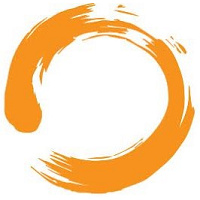There’s a phenomenon that takes place when exercising that’s been catching my attention lately. I’m talking about the tendency to be less than fully present for our immediate experience. This can come in a couple different forms.
How Absence Emerges
Anything that takes us outside ourselves distracts us from the actual experience we’re having – what’s happening in our own body in that moment.
It comes out in different ways in different settings. In the sporty realm for example, in public gyms or group classes, you may spend increased energy comparing yourself – good or bad – to those around you. Yoga practitioners have been onto one aspect of this phenomenon for quite a while: they talk openly about the tendency to base what we’re doing and how we feel about what we’re doing on something outside ourselves (e.g., comparing oneself to others).
There’s also a familiar conversation in our culture about the tedium that forms such a ubiquitous underlying challenge for anyone trying to establish a workout routine. You may find yourself merely going through the motions (“three more half-hearted reps with poor form that lets me cheat a bit and I can quit”), but feeling virtuous and giving yourself credit as if you’d fully shown up. (Note: While there are certainly days where showing up at all is plenty, I’m talking about the times when we have the capacity to be fully present, but for some reason aren’t doing so.)
Both of these examples speak to restlessness, judgment, boredom – the things that distract us from our immediate experience. In pondering this phenomenon, I realized it had a much wider application to daily life.
Why the Disconnect?
If part of my self-identify includes the value of integrity (which it does), then an important component of that is recognizing and admitting when I’m out of alignment. If I value being fully present and alive, then going through the motions may be an indication that something is off.
If I’m comparing myself to others, what’s happened to my self-awareness, self-compassion, and curiosity? Where is my motivation coming from? Judgment tends to squelch these and replace them with external yardsticks.
For me, going through the motions usually points to the times when I’m going through my days like a living “to do” list, checking off the activities and tasks that allow me to feel virtuous: Did my morning workout? Check. Hugged my husband and stepson? Check. Ate a healthy breakfast? Check. Treated people kindly? Check. Went to the gym and lifted weights? Check. Got groceries? Check.
But was I fully present for any of those things, or did they become an empty litany of rectitude?
The Importance of Knowing Your Core Values
When we forget to show up and be fully present for whatever it is we’re doing, the world quickly starts to feel empty and meaningless.
Life coaches know from working with a wide variety of people as they articulate and examine their core values that there are two main motivators behind the values we hold: fear and passion. Fear-based values tend to involve words like “should” and “have to,” while conscious, passion-based values are expressed in terms of “want to.” Once we untangle these for ourselves, it’s much easier to identify those times when we’re living in alignment with our core values – and when we’re not. And then we get to choose what we do about it.
There’s a whole other discussion to be had about taking action based on our values, but for now, let’s simply note that if we’re fulfilling a bunch of “should’s” rather than being motivated from a place of passion, we’re more likely to slip into rote, mechanical actions and activities while our mind wanders elsewhere – or to find ourselves looking to the outside for a sense of who we are and where we stand, and placing judgment on ourselves or others in the process.
The Secret to Being Fully Present
It’s perhaps an understatement to say that daily routine activities – like preparing lunches; going to work inside an office on a gorgeous, sunshine-filled day; or working out regularly – can sometimes feel boring. While these acts may be motivated by a passion-driven value such as “connection,” “family,” or “health,” this doesn’t make the activity itself any more engaging or exciting – especially in the face of our stimulation-rich, nonstop, 21st-century world, which offers so many enticing alternatives.
So how do you get yourself to show up and be fully present for those activities, and in the process cultivate a sense of meaning and fulfillment?
Here we turn for insight to practitioners who have been dealing with this very topic for centuries. Anyone who has tried meditation knows that the very act of sitting still for long periods of time can be a huge challenge in and of itself. Boredom and restlessness are part of it, as is what that boredom becomes when you move past it.
Borrowing from this wisdom, we can choose to view our more routine daily activities as opportunities for meditation and mindfulness. In other words, our daily life is our meditation practice.
Being Fully Present – How it looks in Daily Life
When we approach our chores and routines with restlessness and boredom, they feel empty and meaningless. When we bring our attention and curiosity to every moment, our focus shifts and we begin to attend to our experience in fresh and energizing ways.
To cultivate this experience for yourself, one of the simplest things you can do is find your intention for each activity. Often this is based on your values and consciously chosen priorities, but essentially it is your “why” for each thing you’re doing.
Now play with this, looking for ways to be mindful of your intentions throughout your day. For example, if you’re making the kids’ lunches in the morning, experiment with how it feels to be saying to yourself “Ugh, I’m so sick of having to do this every day! There are so many other things I’d rather be doing!” vs. “I value and prioritize my kids’ health and care about what goes into their bodies. This act is an opportunity to demonstrate my love for them in a way that’s in line with my values. What an efficient use of time!” Actively imagine the energy that goes into those lunch boxes with each of those different intentions.
Another thing you can do is bring your awareness back to your body’s immediate experience, much like focusing on the breath in mindfulness meditation.
For example, when working out, rather than comparing yourself to everyone else in the room or barely being present as you go through your routine, stop and check in with your own body. Get curious. What if you engaged more of your core, tightened up your form, or stretched yourself a bit further? What sort of movement is your body craving? Someone had to invent all those yoga moves that we now view as routines, and they did that by experimenting. Apply that same sort of curiosity to yourself, whether in yoga or other sports. What can this body of yours do? What are its limits? What does it like? Can it give a little more in this moment, do you need to back off a bit, or is what you’re doing just right?
These slight shifts toward showing up and being fully present in our daily lives can go a long way toward making those daily lives feel more fulfilling and meaningful. Reminding ourselves why we’re doing something brings meaning to the experience, and where we place our attention is a strong signal to ourselves of what’s important.



